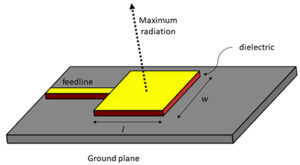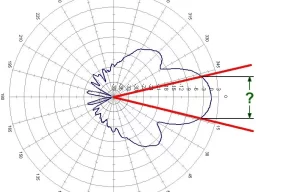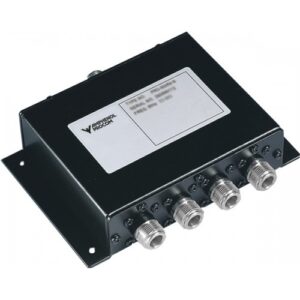Table of Contents
Infinite Ideal
The ideal directivity of a directional coupler is a theoretical concept, implying that directivity is infinite – that is, there is no signal loss or leakage from the output to the isolated port. In the context of RF and microwave engineering such a situation would result in a perfect signal fidelity, and hence there would be no loss. Thus, the performance of any system would be dramatically enhanced in these areas. In real applications, it is impossible to reach the ideal limit of infinite directivity, but in certain situations, it is feasible to manufacture a directional coupler relatively close to the limit, and a high directivity of high as 30 dB or close is desired.
One of the examples is the field of satellite communications. A directional coupler utilized in satellite signal routing should ideally have a directivity that prevents signal leakage into the isolated port with a strength causing interference with other communication channels, which necessitates a directivity level of at least 30 dB. However, while most commercial couplers have directivities within the range of 20…40 dB and are effective, there are still situations when significant directivity is required in relation to the isolation port to approach the ideal level. The effect on signal leakage can be evaluated with an example.
If a digital TV broadcasting is organized with a directional coupler of 25 dB directivity, and another one with 40 dB directivity is used instead. It is possible to show that the signal leakage with the new coupler will be 0.01% – 3.2 times better receiving quality, or “thirteen times reduction of error rates” for digital TV broadcasting, as the signal leakage measured for the coupler of 25 dB directivity is 3.2%. When manufacturing a directional coupler that approaches the ideal level of directivity, which is infinitely close to it, the challenge lies in precision. The engineered materials should be selected with optimal electromagnetic properties and the dimensions should be manufactured with the minimal tolerance value.
It is also important that the losses due to imperfections in arrangement should be minimal as well, for instance, lower loss tangents of dielectrics result in lower efficiency of transmission and absorption of the inner signals and hence increased directivity. The costs of directivity get significantly increased, along with the costs of materials and precision in manufacturing. Usually, a directional coupler to be used with a standard directivity of about 25…30 dB is available at an approximate price of $50, whereas the higher-precision coupler in which the differences of materials and manufacturing costs are reflected would cost $200 or more; however, the benefits of using this type of a highly precise coupler are long-term due to reduced signal leakage and maintenance.
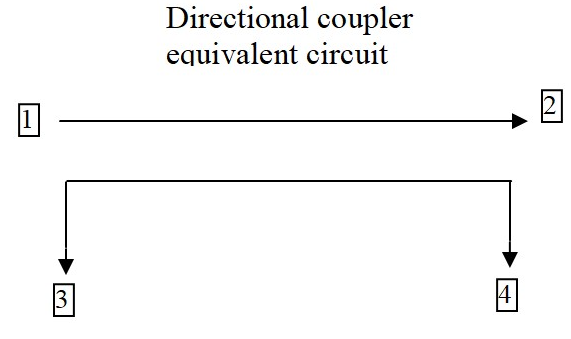
High Directivity Values
Without a doubt, high directivity values are crucial in directional couplers. First, though such high values are rarely necessary, having strong discrimination between signals being routed and wasted is always useful. In practice, couplers with practically any value from the 20s to over 40 dB would be considered to be satisfactory. Directivity measures how well a coupler can differentiate between forward and reverse power, and having high values of this parameter is vital for complex electronic systems.
An example of this process is in modern telecommunications when a directivity of only 30 dB would be rarely used. With 20 dB, a coupler leaks many times more power to the isolated port than the useful signal at the output port, reducing the effectiveness of the network to almost half, as any additional signal will see the interference of the multiple signals going through the adjacent channel. Ultimately, the constraint on the number of networks in an area would reduce the utility of the couplers. Thus, while directivity in the 30s is satisfactory for telecommunications, higher values are often used to further reduce cross-channel interference.
The directivity values can differ by as much as 10 dB without any negative consequences on the operation of the systems that use them. The largest possible benefit of higher values is obtained using particularly precise measurements. For instance, using a 40 dB coupler instead of a 30 dB coupler in some types of research laboratories, and for certain types of research, is a worthwhile investment. The difference can be critical in cases of measurement of power levels close to the floor of noise level, such as in weak shortwave and microwaves communication.
Such devices allow for the sensitivity of a measurement setup to become at least several times larger because the 10 dB difference equalizes how significant the noise level is compared to the measured values. Such additional sensitivity is vital in systems that generate only a small fraction of what the noise level wastes. Unfortunately, increasing directivity is also difficult and expensive due to the inherent limitations of the design.
High-directivity couplers that can provide more than 35 dB of directivity at satellite communication frequencies will undoubtedly cost on the order of several hundreds of dollars, depending on how high the directivity is. Such devices have to use high-quality materials that do not severely degrade when transmitting signals at the relevant frequencies, such as high-quality dielectrics and metals. A coupler with directivity in the 40s can be expected to cost several thousands of dollars despite the simple nature of the device because of the vastly higher construction requirements than a standard coupler.
Accuracy in Measurements
Precision of measurements is a vital requirement in telecommunications, aerospace, and research. A directional coupler’s performance can be a determinant in data integrity, and ideal directivity is a prerequisite for accurate operation. Directivity in directional couplers allows signals at the output and coupled ports to be differentiated from reflections that may be transmitted, and it can pick up reflected power to the entire best possible.
RF testing and network analysis inherently depend on signal integrity, and the use of a directional coupler with great directivity can sharply reduce measurement error. For instance, in the calibration and inspection of a high-frequency antenna system, a directional coupler of 35 dB or greater can distinguish between power levels in transmitted and reflected waves that are closer together. As such, this can achieve a higher quality tune of the antenna, which can be passed on to other systems and improve the reliability of communication.
In a typical RF design lab, engineers are working on a new wireless communication device. They decide to test it using a directional coupler, but have two options: one coupler with a directivity of 40 dB, and another with a directivity of 20 dB. With the first coupler, it is possible to measure the reflected power to -40 dBm, or 0.0001 mW. The highest power measurable by the second coupler is -20 dBm, or 0.01 mW, which is much higher. This means that in the second system, the transmission’s accuracy is the lowest 100 times more powerful.
Using a coupler with such a high level of directivity in a satellite communication system can significantly improve its performance. Here, power reaching the satellites and reached from them is weak due to the long distance between the stations, and satellites using couplers capable of separating the signal path so reliably that it can return to the ground with adequate frequency will experience much sasighnal degradation along the way.
Better signal quality will result in better customer service and technical support savings.operations that do not require repeated recalibration. This requirement can be very important for a satellite communication operator, as it can be the difference between a system that is always in need of repair and one that performs its basic function almost without interruption. Operations without recalibration can save significant costs from annual budgets, as interventions are expensive. A constant system will also improve customer satisfaction, as people will not complain about poor service and require support.
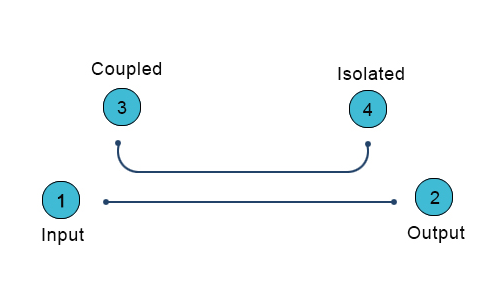
Maintained Signal Integrity
Preparing and maintaining signal integrity is a fundamental concept in systems where high fidelity and low noise are absolutely important, such as in medical and data communication systems. The reason for the importance of the ideal directivity of the directional couplers lays in the necessity to keep signals’ purity and strength. In medical imaging and particularly in high-resolution types, such as MRIs, the RF signals are characteristic and responsible for creating the images.
Therefore, their proper transmission without any leakage or additional noise from the equipment is imperative for creating a precise and useful picture that is necessary for correct diagnosis. An ideal coupler would not have more than 0.03% of the signal loss. In contrast with a coupler with 20 dB directivity, that allows up to 1% signal loss, the medical image can be foggy, reducing its quality and fine detail.
Similarly, in the realm of massive telecommunications, maintaining signal integrity is directly related to the service quality and speed of data transmission. High-speed internet services would not be able to operate at the desired pace if massive signal losses had to be corrected. For example, the coupler in a fiber optic internet service that operates with 0.5% signal loss will work slower or will have built-in error corrections to reduce the accuracy of the articles.
Either condition is unacceptable as it reduces the efficiency of the whole system. It is especially important for routes, such as long roads, where signal amplification and additional purchasing of couplers can make for substantial costs. Interestingly, the overall maintenance costs of high-directivity couplers are less than the costs of additional signal locking and replacement of cheaper directional couplers.
For example, a television broadcasting agency wants to keep the signals from its televised products pristine. Even though the reduction of signal by high-directivity couplers is more expensive upfront, the cost of signal fixing and troubleshooting of improper picture quality is not necessary in the case of an ideal coupler. A simple reduction of signal integrity immediately generally reduces the costs, supplies, and associated time and labor waste.
Efficient Routing
Efficient routing in signal transmission systems is of importance in minimizing loss and maximizing performance. In order to achieve this task, ideal directional coupler directivity is necessary. It is the directivity that ensures that signals are directed precisely to their intended paths without unwarranted detours or losses. Firstly, in a telecommunications system, a high directivity coupler averts leakages that may be witnessed in other pathways in fiber optic networks. The coupler is specially designed for single fiber paths and, as such, no misalignment occurs in the near end signal. This explains the critical nature of the routing in the context of telecommunications. Secondly, in premising the argument by using broadcasting networks, it is possible to insinuate that power is optimally used.
Such routing ensures that magnitudes of the delivered signals to vary and keep being lower than would be the case with direction couplers having lower magnitudes. Using a direction coupler whose directivity values are 40 dB or more ensures that almost power is made to be delivered and not wasted through the transfer. This is critical because of the need to have power consumption reduced. Most broadcasting stations have W transmitters and, with high energy costs, there is a direct need to minimize the power being wasted. This point is based on the assumptions that each W power costs $1 per month, which could be used to support a few hours of light.
A W transmits to over 1 km and hence has the capacity to cover even a 10 km radius when broadcasting. The efficest coupler will only lose 0.02 dB in a distance of 50 km translating to a monthly cost of $0.05 for enhancing the routing of information. Thirdly, for a broadcasting station covering a 100 km radius, the direct coupler that necessitates the needed power of 40 dB would reduce revenue attributable to increasing power losses.
This is because even a single percentage of power that is lost can lead to a loss of $500 per month in operational costs. The operation costs reference the need to sustain electricity costs which are high for a significant W transmitter in a broadcasting station. The discussion should be repeated in each of the other pathways, apart from routing which ensures that energy is conserved in order to reduce operational costs.
Design Precision
Design precision is a key concept in the development of directional couplers. The ideal directivity in this technique ensures correct routing of signals and minimal leakage. Thus, design precision directly affects the performance of these devices since they are sometimes used in hi-fi applications that require minimal directivity. In RF and microwave engineering, for example, it may be difficult to achieve directivity of 40 dB or higher because of inaccurate or improperly designed couplers. In this context, several dimensions and material characteristics must be accounted for to maintain minimal signal loss.
First, it is necessary to consider the dimensions of the coupling region. The two conducting lines must approach each other within a fraction of a millimeter. Manufacturing errors in the width or the spacing of the transmission lines are especially relevant in hi-fi applications that exclude any signal attenuation. For example, in the operation of advanced communication satellites or radar equipment, a slight discrepancy in the electromagnetic properties of the coupling region may lead to a significant decrease in the device performance.
Moreover, since high-frequency devices operate much faster than their low-frequency counterparts, the error effect is amplified. A similar consequence may be found in electromagnetic designs that transmit powerful signals across great distances and, therefore, are particularly sensitive to the device material. Second, if the signals need to be recorded accurately, the effects of the variations in the material characteristics are indirectly proportional to the minimum period of the wave. Taken together, the instances described above suggest that an error or deviation in the width or spacing of the conducting lines will affect the performance of the directional coupler. Moreover, the influence will become significant if the coupler is placed in hi-fi equipment.
Second, the solid material of the coupler’s substrate should have minimal dielectric loss. If it is in the form of cheap and poor-quality dielectric materials, there may be a significant variation in the dielectric properties, such as permittivity or loss tangent. Hence, the deviations of the material properties need to be reflected in the device performance. For example, properly chosen high-quality materials may reduce the error in the dimension control test, thus providing better performance and reduced cost of the coupler. If the Q-factor of the material is at least 1, with a first deviation of $2-5 in substrate cost, a coupler with higher permittivity and loss-tangent of the material in the substrate may be used. This will increase the cost of the coupler by $5-10, but the directivity will increase by at least 5 dB, which is crucial in hi-fi applications.
There are similar examples in the manufacturing industry. For instance, high-precision orientation techniques allow for the creation of precise and repeatable patterns on the substrate. Such techniques increase the cost of production by 30%, with a potential increase in the cost of manufacturing the final product by 20%. A notable example is the photolithography process used in semiconductor manufacture.
These practices are especially relevant in the context of aerospace and defense projects, where the cost of failure can be catastrophic. In data centers, for example, the use of highly precise couplers can reduce the number of lost packets. In these facilities, internet services are of critical importance; therefore, improving the overall signal integrity to reduce the amount and intensity of corruption of signal packets is essential in decreasing the rate of packet loss.

